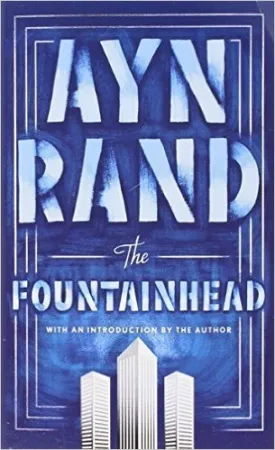The Fountainhead Book Summary

Fateful Careers Choices
Set in New York City in the 20s and 30s, the novel Fountainhead, by Ayn Rand, published in 1943, takes the readers into the murky corporate world of architects and focuses on human virtues and vices. It begins with a promising young architect named Howard Roark getting expelled from architecture school before joining a righteous yet disgraced architect named Henry Cameron in New York. In contrast, his batchmate Peter Keating joins the renowned architect Guy Francon at his firm Francon & Heyer. Quite evidently, Keating excels in his career, while Roark and Cameron face financial ruin despite creating excellent designs.
Falling for Dominique
After an impoverished Cameron retires, Roark joins a granite quarry in Connecticut before making one last failed attempt at starting his own business. There, he is sensually attracted to Guy Francon’s beautiful daughter, Dominique. Roark forces himself on her one night after breaking into her house. Disturbingly enough, she looks for Roark and follows him to New York despite this incident, knowing he has left Connecticut to work for a New York businessman. She starts meeting him secretly after learning that he designed one of her favorite buildings, while she hates him before the world.
Toohey’s plan
Meanwhile, an architectural critic and socialist, Ellsworth Toohey, emerge to destroy the idea of aiming for excellence by promoting mediocrity and humility. He sabotages Roark’s career by convincing Hopton Stoddard, a weak-minded businessman, to appoint Roark as the designer of a new building before suing him after the completion. A trial takes place, and despite Dominque’s defense of him, Roark loses the case to the negative testaments of all the prominent New York architects. A self-sabotaging Dominique then marries Keating.
An Explosive Revenge
A formerly idealistic publisher named Gail Wynand falls for Dominique and buys her from Keating in exchange for financial favors. In her quest to self-sabotage, Dominique marries him but later finds out that he is not that bad a human being. Wynand befriends Roark, oblivious to his and Dominique’s history. A disgraced Keating asks for Roark’s help for a public housing project. Intrigued by its righteous aspect, he agrees to hop on while letting Keating take the credit with the condition that no changes will be made in his designs. Roark takes a little yacht vacation with Waynand, and on his return, he finds out that his condition has not been honored by Keating, who has made alterations to his design. Enraged, he blows up the building with dynamites and faces the consequences in the form of prosecution. He surrenders without a fight.
The Trial and the Aftermath
Condemned by the whole nation, Roark finds a supporter in Wynand, who, after a righteous epiphany on his lost idealism, starts publishing articles in his newspaper, The Banner. Wynand supports and defends him until its circulation plummets, spurring the workers into a strike. Nevertheless, he keeps publishing with the help of his wealthy wife. However, to Roark’s shock, Wynand gives in to societal pressure and refuses to support him any further, potentially ruining his prospects of winning the trial. Desperate to prove himself, Roark elaborates on morality, righteousness, and being true to oneself in front of the courtroom. He intrigues all by talking about genuine creators who excel at their trade and how they are ruined financially and emotionally by the vicious society and the unforgiving corporate world. He mesmerizes the courtroom so that the jury finds him not guilty of the crime he committed. He marries Dominique despite their tumultuous past, as she is genuinely in love with him and feels a deep connection with him for his beliefs and disregard for social conformity.
2 Comments
Jordan Singer
2dSantiago Roberts
4d